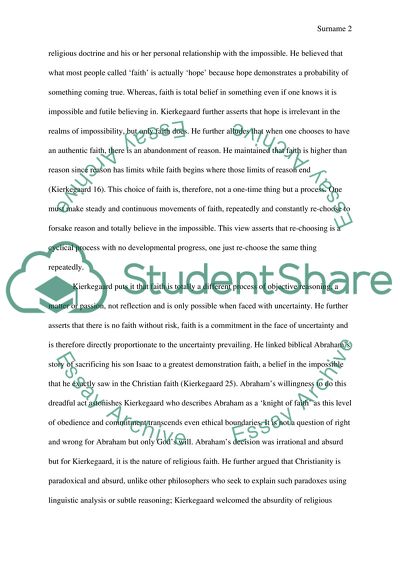Cite this document
(Kierkegaard's View on the Relationship between Faith and Reason Essay Example | Topics and Well Written Essays - 1250 words, n.d.)
Kierkegaard's View on the Relationship between Faith and Reason Essay Example | Topics and Well Written Essays - 1250 words. https://studentshare.org/philosophy/1874330-kierkegaards-view-on-the-relationship-between-faith-and-reason
Kierkegaard's View on the Relationship between Faith and Reason Essay Example | Topics and Well Written Essays - 1250 words. https://studentshare.org/philosophy/1874330-kierkegaards-view-on-the-relationship-between-faith-and-reason
(Kierkegaard'S View on the Relationship Between Faith and Reason Essay Example | Topics and Well Written Essays - 1250 Words)
Kierkegaard'S View on the Relationship Between Faith and Reason Essay Example | Topics and Well Written Essays - 1250 Words. https://studentshare.org/philosophy/1874330-kierkegaards-view-on-the-relationship-between-faith-and-reason.
Kierkegaard'S View on the Relationship Between Faith and Reason Essay Example | Topics and Well Written Essays - 1250 Words. https://studentshare.org/philosophy/1874330-kierkegaards-view-on-the-relationship-between-faith-and-reason.
“Kierkegaard'S View on the Relationship Between Faith and Reason Essay Example | Topics and Well Written Essays - 1250 Words”. https://studentshare.org/philosophy/1874330-kierkegaards-view-on-the-relationship-between-faith-and-reason.


